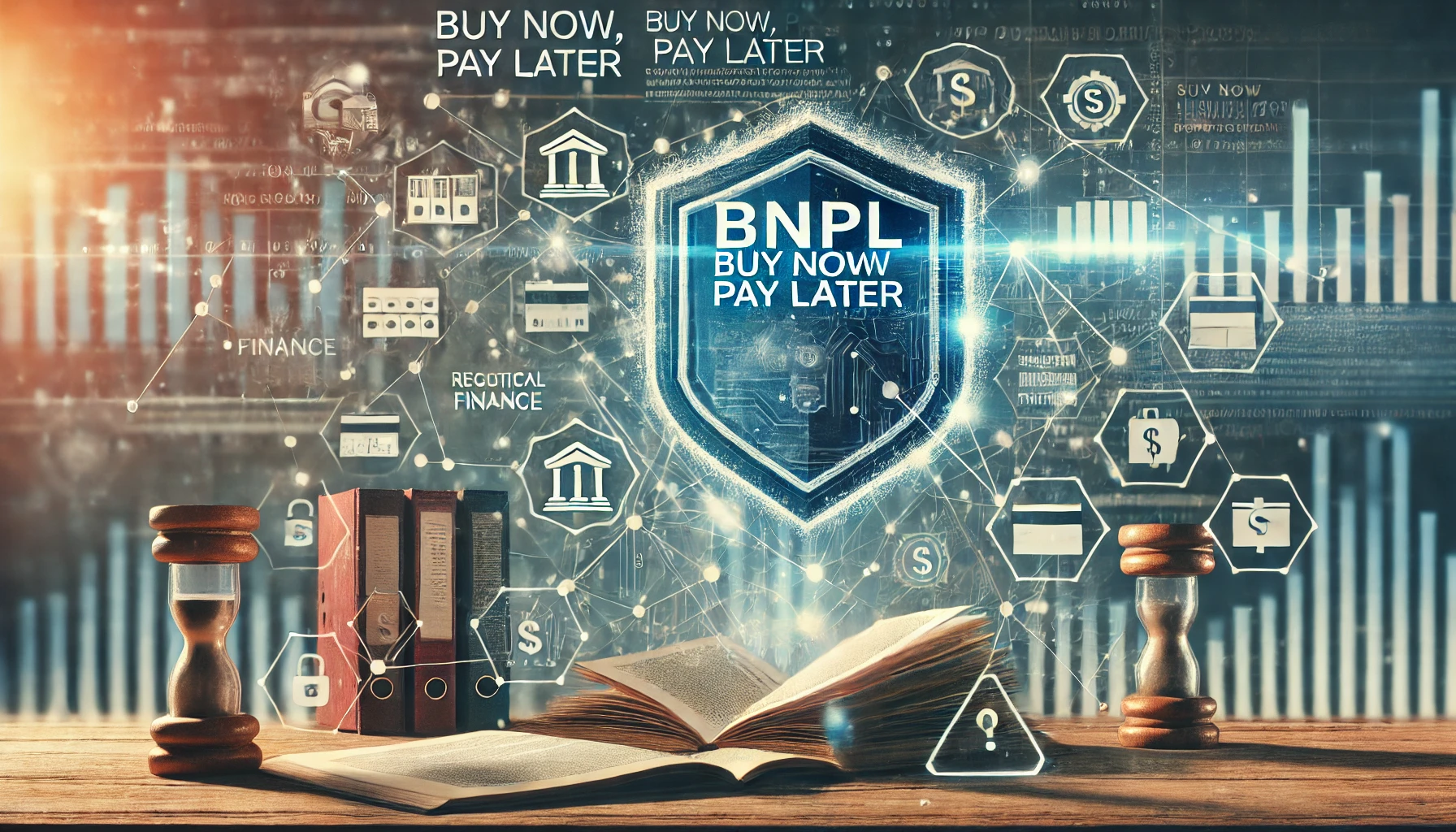In our previous articles on BNPL (Buy Now, Pay Later), we explored this innovative payment model and its benefits for both businesses and consumers. We also discussed how to integrate BNPL into your payment strategy.
However, as with any financial solution, there are risks associated with its use. In this article, we will focus on the main risks of BNPL and how to manage them effectively. We will also cover the regulations governing BNPL and what this means for professionals.
Article plan
- The main risks associated with BNPL for professionals
- How to mitigate the financial risks of BNPL
- BNPL regulations and compliance: What you need to know
The main risks associated with BNPL for professionals
Although BNPL offers many benefits, it also presents certain risks for professionals. These risks can affect both the profitability and financial stability of businesses.
In this section, we detail the major risks management related to defaults, fraud, and cash flow issues, and discuss how to survive and manage them effectively.
Risks related to defaults and consumer over-indebtedness
The first major risk you may encounter when offering BNPL is defaults. Although BNPL platforms emphasize customer solvency, there is always the risk that some consumers may not be able to repay their debts. If this happens, it can lead to unpaid debts, impacting your business’s cash flow.
📌 Consumer over-indebtedness: BNPL allows consumers to purchase immediately and pay later, but this can lead to over-indebtedness. If a consumer uses BNPL across multiple sites simultaneously, it may prevent them from repaying their debts, creating a risk of non-payment.
📌 Loss of revenue: Defaults can directly affect your revenue. If a customer does not repay their debt, the BNPL provider may not reimburse the full amount owed.
Solutions to mitigate this risk:
- ✅ Work with BNPL platforms that guarantee payments and handle unpaid debts.
- ✅ Implement strict payment tracking and reminders to minimize unpaid debts.
- ✅ Regularly assess the solvency of customers before offering deferred payments.
Fraud and chargeback risks
BNPL, like any payment solution, is also exposed to the risk of fraud. Fraudulent transactions can occur if payment information is stolen or if consumers use counterfeit identities to make purchases.
- Credit card fraud: Some consumers may use stolen credit cards to make payments via BNPL.
- Chargebacks: Consumers may sometimes initiate chargebacks, meaning they ask their bank to cancel a payment. This can disrupt your cash flow and lead to additional fees.
Solutions to mitigate this risk:
- ✅ Collaborate with BNPL platforms that implement strict security measures to verify consumer identity.
- ✅ Use fraud detection tools to analyse transactions and identify suspicious behaviours.
- ✅ Implement a fraud prevention policy within your business.

Managing payment delays and cash flow issues
Another challenge of BNPL lies in managing payment delays. Although consumers commit to a payment schedule, delays may occur, which can disrupt your cash flow management.
Well, one major risk with BNPL is the unpredictability of cash flow. Since payments are spread out over time, there will be moments when the expected funds just don’t come in as planned. And that can quickly turn into a headache if you’ve got pressing expenses—like supplier invoices or payroll—that can’t wait. When the inflows and outflows don’t line up, even a small delay can throw off your financial balance.
On top of that, relying too much on BNPL to fuel your sales can be a slippery slope. Sure, it might boost conversions in the short term, but what happens when those deferred payments start lagging? If too many customers default or delay payments, your business could be left scrambling for liquidity. It’s a risky game, especially if BNPL starts making up a big chunk of your revenue stream.
Solutions to mitigate this risk:
- 👉 Diversify payment options so you are not overly reliant on BNPL.
- 👉 Establish partnerships with BNPL providers that ensure quick and guaranteed payments.
- 👉 Implement proactive cash flow management to anticipate payment delays and adjust your spending accordingly.
How to mitigate the financial risks of BNPL?
Now that we have identified the risks associated with BNPL, it is important to focus on strategies to reduce them.
This section presents practical solutions to manage financial risks and ensure that your business can fully benefit from BNPL without jeopardizing its stability.
Work with strong BNPL partners
One of the most effective ways to reduce financial risks associated with BNPL is by choosing the right partners. Some BNPL providers take on much of the financial risk, meaning you are assured of receiving payment, even if a customer does not meet their deadlines. These partners offer payment guarantees, eliminating the risk of defaults for your business.
Criteria for choosing a good BNPL provider
First off, you’ve got to be sure your BNPL provider is financially solid. If they’re not stable or don’t have a strong track record, you might run into trouble down the line. After all, if they can’t meet their own financial commitments, how can you trust them to process payments reliably? A provider with a solid reputation and a proven ability to manage funds is non-negotiable.
Then there’s the question of protection against defaults. You don’t want to be the one eating the losses if customers don’t pay up. The right BNPL partner should have mechanisms in place to absorb those risks, ensuring your business isn’t left vulnerable. Plus, strict customer solvency monitoring is a must—if the provider isn’t carefully assessing who gets approved, non-payment issues could pile up fast.
Establish effective internal controls
It is crucial to strengthen your internal controls to minimise fraud and default risks. By adopting rigorous management practices, you can better monitor transactions and protect your business.
Practices to adopt for effective internal controls:
First things first, you need to make sure your customers can actually afford their BNPL payments. Letting just anyone split their purchase into installments without checking their financial situation is a recipe for trouble. A solid verification process helps prevent missed payments and reduces the risk of bad debt piling up.
On top of that, keeping a close eye on transactions is key. Regular audits help catch anything suspicious—whether it’s anomalies, potential fraud, or patterns that could signal a problem. And let’s not forget your team. If they don’t know how to spot red flags or properly manage BNPL transactions, issues can slip through the cracks. Training them to recognize risky behavior and understand the system is just as crucial as the technology behind it.
Diversify payment options
An effective way to reduce BNPL-related risks is to diversify your payment options. Do not rely solely on BNPL to drive sales. Also offer other payment solutions such as credit cards, bank transfers, or immediate payments.
Benefits of payment diversification:
Relying too much on BNPL can be risky, so it’s always a good idea to mix things up. Having a variety of payment methods in place ensures that if something goes wrong—like delays or defaults—you’re not left scrambling for cash flow. A well-balanced payment strategy keeps your business stable, even when BNPL payments don’t come through as expected.
Plus, offering more payment options isn’t just about risk management—it’s also about reaching more customers. Not everyone wants to use BNPL, and by providing alternatives like credit cards, digital wallets, or direct transfers, you make it easier for different types of buyers to complete their purchases. In the end, more flexibility means more conversions and better overall sales.

BNPL regulations and compliance: What you need to know
Beyond financial risks, BNPL is also heavily regulated by legal frameworks.
In this section, we will review the main legislation governing BNPL, particularly in Europe and North America. We will also discuss merchants’ legal obligations and the risks of non-compliance.
European and American BNPL legislation
BNPL is a relatively new payment model, but it is subject to increasingly strict regulations in many regions, especially in Europe and the United States.
👉 In Europe :
BNPL is often treated as a form of consumer credit and is therefore subject to specific regulations. The Consumer Credit Directive imposes transparency and disclosure requirements on businesses offering BNPL solutions. This includes clear presentation of credit terms, such as amounts, due dates, and interest rates where applicable.
👉 In the United States:
BNPL regulation is more relaxed, but several states have implemented specific rules to regulate consumer credit offerings. Businesses must comply with local consumer credit laws, particularly regarding consumer protection.
👉 In the United Kingdom:
The Financial Conduct Authority (FCA) is tightening its grip on BNPL providers. New regulations will require BNPL firms to conduct affordability checks, ensure transparent communication of terms, and offer clearer consumer protections, similar to traditional credit agreements. These measures aim to prevent consumers from taking on unsustainable debt.
👉 In Australia:
The Australian Securities and Investments Commission (ASIC) oversees BNPL services under the National Consumer Credit Protection Act. While BNPL providers currently operate under a less restrictive framework than traditional lenders, new regulatory proposals seek to introduce responsible lending obligations, requiring providers to assess customers’ ability to repay before approving transactions.
👉 In Canada:
BNPL falls under provincial consumer protection laws, meaning regulations vary across regions. Some provinces require clear disclosure of terms, while others are considering stricter oversight to prevent predatory lending practices. Financial regulators are also monitoring BNPL’s impact on consumer debt levels.
👉 In Asia:
Regulations differ significantly between countries. In Singapore, the Monetary Authority of Singapore (MAS) is evaluating stricter guidelines to protect consumers from over-indebtedness. In India, BNPL providers must comply with the Reserve Bank of India’s (RBI) digital lending guidelines, which include restrictions on excessive interest rates and transparent loan terms. Meanwhile, China has imposed stringent fintech regulations, limiting the operations of BNPL providers and requiring closer supervision of lending activities.
As BNPL continues to grow globally, more regulatory frameworks are emerging to balance innovation with consumer protection. Businesses operating across multiple markets must stay ahead of evolving compliance requirements to avoid legal risks and maintain trust with consumers.
Merchants’ legal obligations when offering BNPL
Merchants who integrate BNPL into their payment model must adhere to several legal obligations, including:
When it comes to BNPL, transparency is key. Consumers need to fully understand what they’re signing up for, including repayment terms, any potential fees, and what happens if they miss a payment. Hidden costs or unclear conditions can lead to frustration, disputes, and even regulatory trouble for businesses. A clear, upfront explanation of payment terms builds trust and ensures compliance with consumer protection laws.
At the same time, handling personal data comes with serious responsibilities. Merchants must follow strict data protection regulations, such as GDPR in Europe, to safeguard sensitive information related to BNPL transactions. Mishandling customer data can lead to fines and reputational damage, so businesses need to implement strong security measures and privacy policies.
Finally, consumer rights must always be respected. Customers using BNPL still have the same rights as any other shopper, meaning they should be able to return products and receive refunds when applicable. In case of disputes, businesses must provide fair resolution processes to protect consumers and maintain compliance with legal standards. Ignoring these rights not only risks penalties but can also damage customer relationships in the long run.
Risks of non-compliance and how to avoid them
Failure to comply with regulations can result in financial penalties and legal disputes. To avoid non-compliance risks, it is important to:Keeping up with BNPL regulations isn’t just a good practice—it’s essential. Laws around buy now, pay later services are evolving quickly, and what’s compliant today might not be tomorrow. Businesses need to stay informed about any legal changes in their country or region to avoid unexpected fines or restrictions. Regular monitoring of regulatory updates ensures that your BNPL offering remains both legal and competitive.
Beyond staying informed, adapting your processes is just as important. Your e-commerce site and payment system must align with all legal requirements, from data protection to transparent credit terms. This might mean updating your terms and conditions, adjusting how payment options are presented, or implementing new consumer protection measures.
And when things get complicated, seeking expert advice can make all the difference. Consulting a lawyer who specializes in financial regulations can help ensure your BNPL model is fully compliant. Legal guidance can prevent costly mistakes and give you the confidence that your business is operating within the law, even as regulations continue to evolve.
Optimising BNPL benefits while minimising risks
BNPL is a powerful tool for driving sales and enhancing the customer experience. However, it carries risks that, if not managed effectively, can affect your business’s financial stability.
By implementing strategies to reduce these risks, choosing the right partners, and staying compliant with legal regulations, you can fully leverage the benefits of BNPL while protecting your business from financial and legal risks.
Make sure to monitor regulatory changes and adapt your practices to maximise the benefits of this flexible payment solution.



